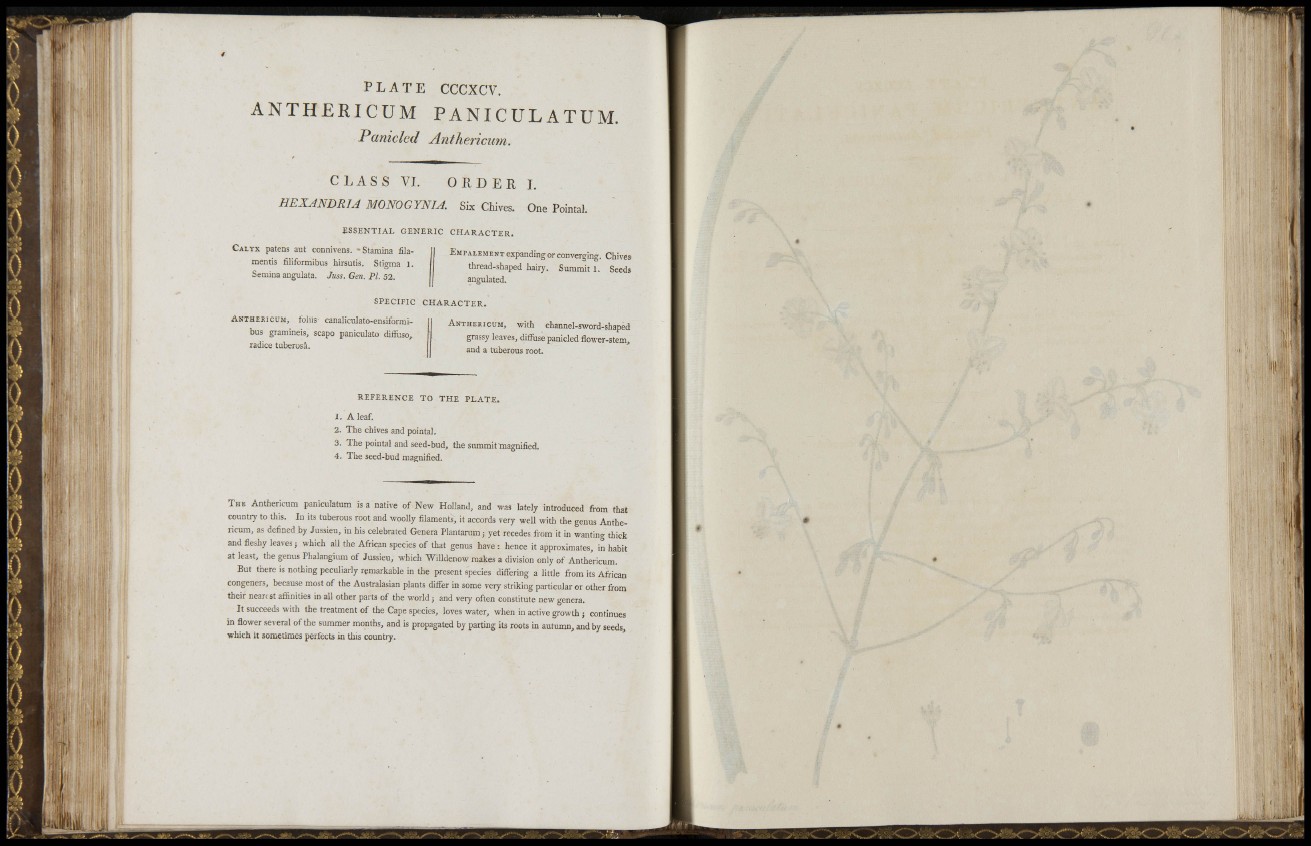
: IM
K< I
I
'fî h i;: i'li:
in:
P L A T E CCCXCV.
A N T H E R I C U M PANICULATUM.
Panicïed Antherìcuìn.
C L A S S VI. O R D E R I.
HEXANDRJA MONOGYNIA. Six Chives. One Pointai.
ESSENTIAL GENERIC CHARACTER.
CALYX patens aut connivens. - Stamina filamentis
filiformibus hirsutis. Stigma 1.
Semina angulata. Juss. Gen. PI. 52.
EMPALEMENT expanding or converging. Chives
thread-shaped hairy. Summit I. Seeds
angulated.
SPECIFIC CHARACTER.
ANTHERICUM, foliis canalicnlato-ensiformibus
gramineis, scapo paniculato difiliso,
radice tuberosa.
ANTHEEICUM, with channel-s\vord-shaped
grassy leaves, diffuse panicled flower-stem,
and a tuberous root.
REFERENCE TO THE PLATE.
1. A leaf.
2. The chives and pointal.
3. The pointal and seed-bud, the summit magnified.
4. The seed-bud magnified.
THE Anthericum paniculatum is a native of New Holland, and was lately introduced from that
countiy to this. In its tuberous root and woolly filament^, it accords very well with the genus Anthericum,
as defined by Jussieu, in his celebrated Genera Plantarum; yet recedes from it in wanting thick
and fleshy leaves; which all the African species of that genus have : hence it approximates, in habit
at least, the genus Phalangium of Jussieu, which Willdenow makes a division only of Anthericum.
But there is nothing peculiarly remarkable in the present species differing a little from its African
congeners, because most of the Australasian plants differ in some very striking particular or other from
their neart st affinities in all other parts of tlie world; and veiy often constitute new genera.
It succeeds with the treatment of the Cape species, loves water, when in active growth j continues
in flower several of the summer months, and is propagated by parting its roots in autumn, and by seeds,
which it sometimes perfects in this country.
1 '
ii ! •
, f,
i l
|(ii - ; ^ '